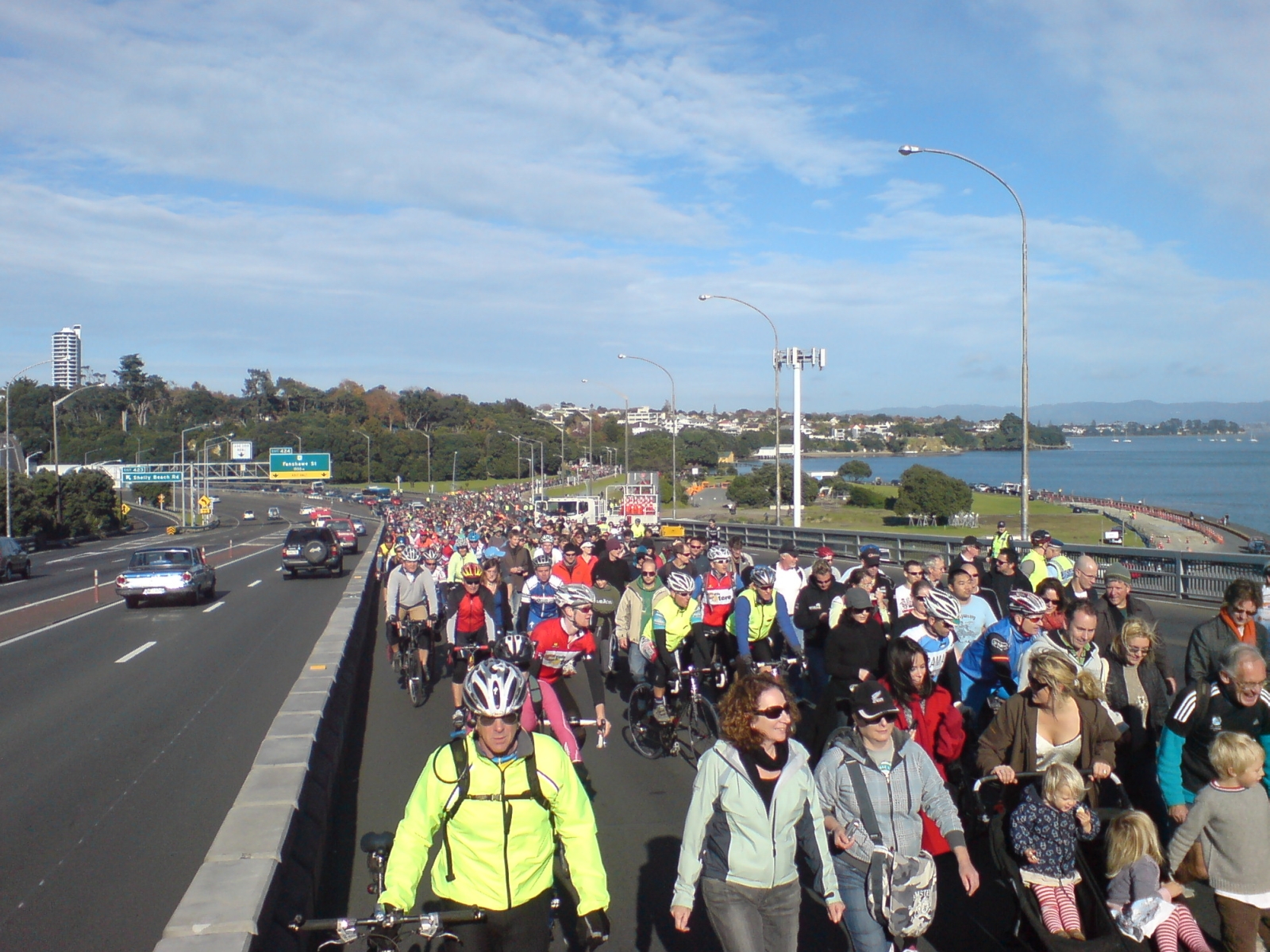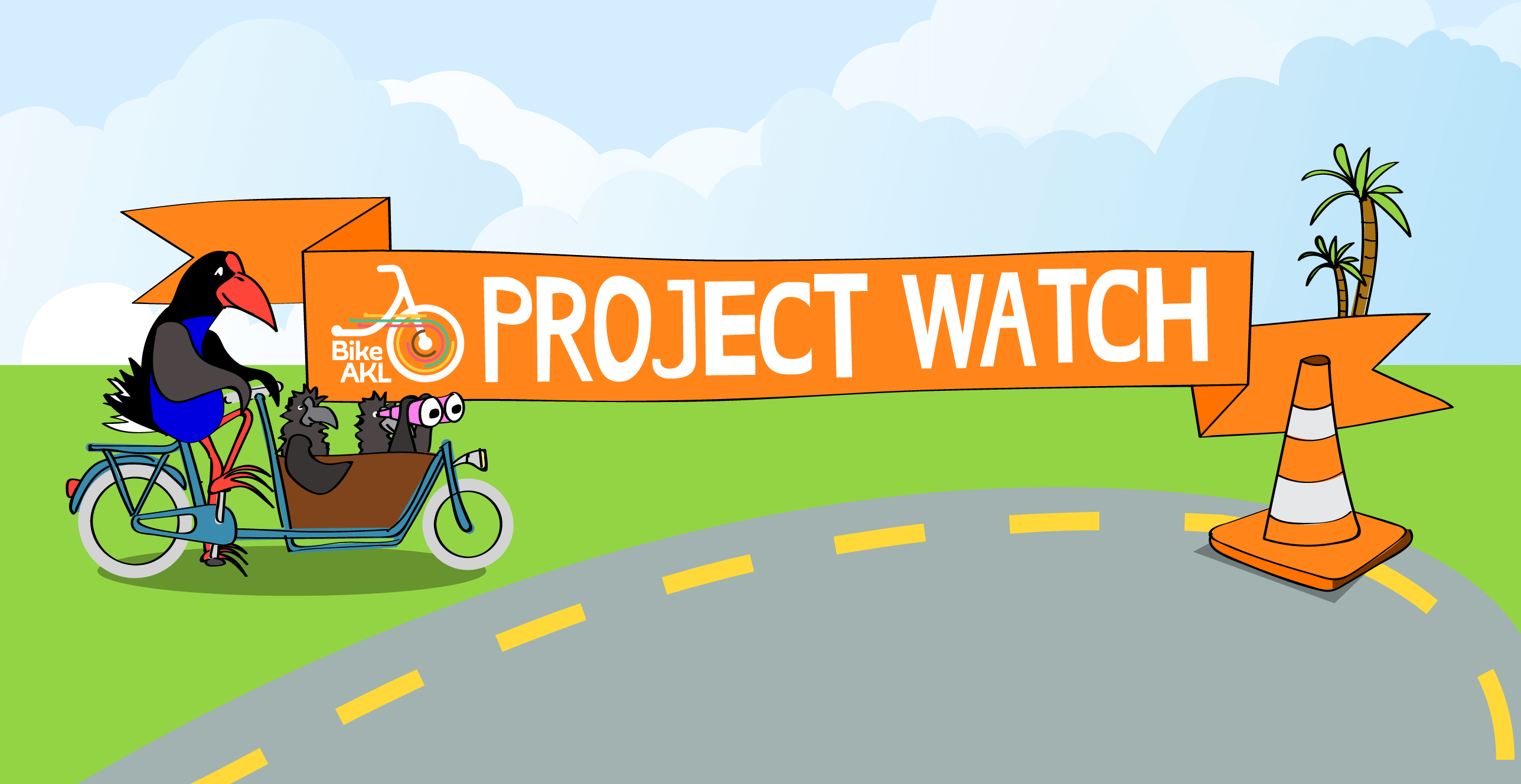Please help us achieve traffic speeds that put New Zealanders’ safety first – make a quick submission by 5pm Friday, June 16! In this guest post, Bevan Woodward of Skypath Trust explains the catch in the proposed speed-limit setting rule, and how to fix it…
NZTA is updating the speed-limit setting rule… but it is unwilling to put New Zealanders’ safety first. This is a missed opportunity to make our roads safer, more liveable, more vibrant and more efficient.
Instead NZTA continues to require that speed limits be ‘safe and appropriate’. This initially sounds good – who doesn’t want safe streets? And it’s appropriate for traffic to go more slowly on streets where we live, shop, and travel to school.
Unfortunately, we know there’s a nasty fish hook in the phrase ‘safe and appropriate’.
NZTA’s rule defines ‘appropriate’ as ‘optimising efficiency outcomes’, which NZTA then defines as ‘economic productivity’. This creates a flawed trade-off between safety and speed, because it results in dangerous roads with no evidence of increased efficiency nor economic productivity.
YOU CAN HELP! Please email: rules@nzta.govt.nz by 5pm, Friday June 16 and ask that the Setting of Speed Limits Rule adopts a ‘safety first’ approach for the setting of speed limits. This approach has proven to work well in countries like Germany, Sweden, the Netherlands and Denmark, who enjoy roads that are both safer and more efficient than New Zealand’s.
Background
Reducing speed is the most critical place to start if we want to reduce the number of deaths and serious injuries on New Zealand’s roads.
‘Speed is the single biggest road safety issue in NZ today. The faster you drive the more likely you are to crash and suffer injuries.’ – Auckland Transport website
‘Speed is the difference between a correctable mistake and a fatal error. Every extra km/h increases the likelihood of someone having a crash. Regardless of what causes a crash, speed always plays a part.’ – NZTA’s Better Conversations on Road Risk Toolkit
‘Everyone travelling a few kilometres slower makes us all safer. With even a small decrease in average speed, we see a decrease in the number of fatal and injury crashes.’ – NZ Police, Facts and Myths About Speed.
Some points to bear in mind
- New Zealand has one of the highest rates per capita of road deaths in the world: twice that of the United Kingdom, and four times that of Northern European countries.
- Travelling too fast for the conditions contributes to about a third of fatal crashes in NZ.
- Speed is a factor in every crash, as it determines the severity of the impact and the resulting injuries or deaths.

- By OECD standards, New Zealand’s roads are unforgiving of driver error – and yet we also have the highest speed limits on our urban and rural roads.

- Productivity isn’t simply about travel time. NZTA’s own resources note the huge economic impact of our current rate of road deaths and injuries: ‘In 2014, 295 people died on our roads. This cost New Zealanders $3.14bn.’ And the Ministry of Transport keeps count of the social cost of our road toll, which rose 7.4% from 2014 to 2015, with fatalities up by 9%.
- NZTA’s Safer Journeys programme aims to ‘Reduce death and serious injuries, and support economic productivity through travel speeds that are safe and appropriate for road function, design, safety and use.’ But there is no evidence of a link between higher traffic speeds and efficiency or economic productivity; countries with safer standard urban speeds of 30km/h (and rural speeds of 60-80km/h) such as Sweden, Netherlands, Germany, Denmark, have road networks at least as efficient and economically productive as New Zealand.
- Increasingly, international best practice is adopting a ‘safety first’ approach, and the trend is for speed limits of 30km/h on urban streets and 60 – 80km/h on rural roads. The European Union recently committed to halving road casualties by 2030 by among other things ‘expanding and integrating reduced speed limits, such as 30 km/h, into high-risk areas, in particular areas where people work, cycle and play.’

- Every year 300 – 400 people are killed on our roads; compared to 40 – 60 people killed in the workplace. The guiding principle of New Zealand’s Health and Safety at Work Act is that people in the workplace should be given the highest level of protection against harm as is reasonably practicable. Why shouldn’t the same protection be afforded to us when using our roads?
It’s time for a truly Safety First approach to speed limits; once safety is ensured, efficiency and productivity can be desirable secondary goals.
That is why we request that the requirement for ‘safe and appropriate’ speed limits be changed to a requirement for speed limits that are ‘as safe as is reasonably practicable given the road function, design, users and the surrounding land use’. This will align the Setting of Speed Limits rule with NZ’s Health and Safety in the Workplace legislation and the NZTA Speed Management Guide – and will reduce NZ’s appalling road toll.
– Bevan Woodward



